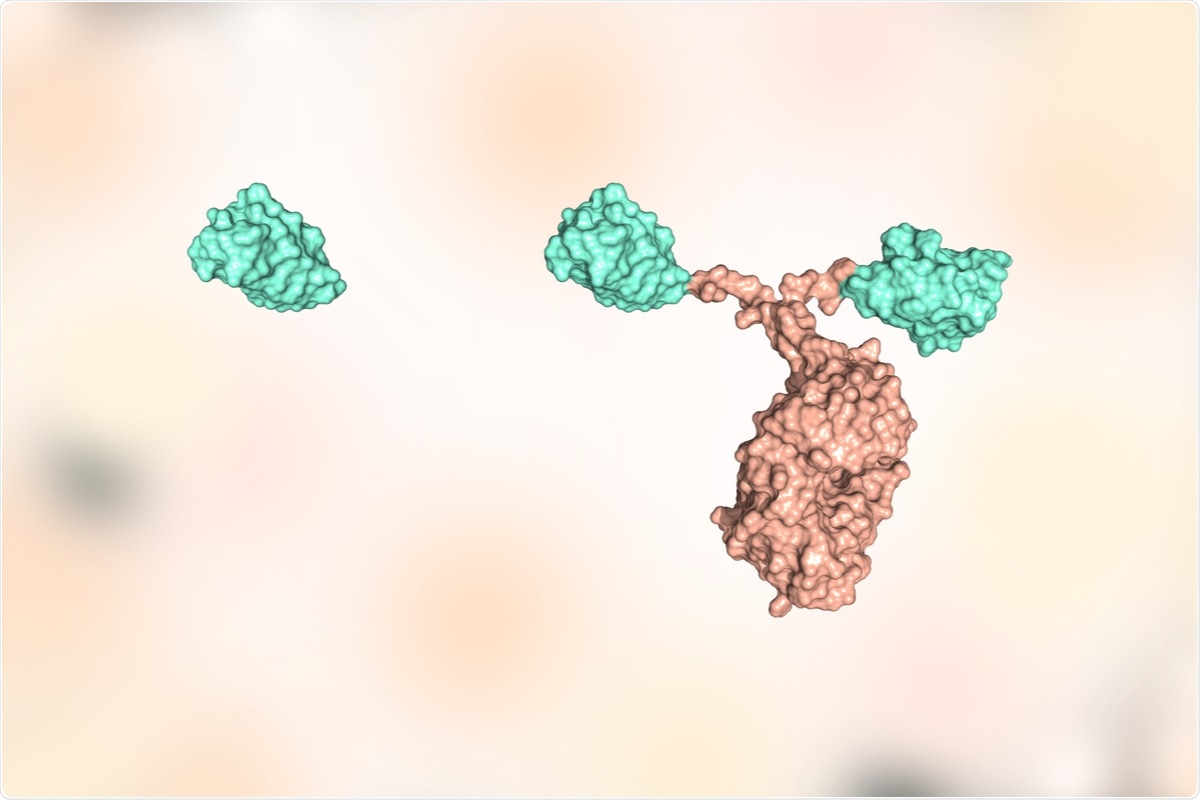The coronavirus disease 2019 (COVID-19) pandemic has caused major damage to global health and the economy for almost two years. Emerging variants of concern (VOCs) that carry spike protein mutations can often evade host immune responses and therapeutic antibodies. Researchers have developed antibodies and nanobodies against the severe acute respiratory syndrome coronavirus 2 (SARS-CoV-2) spike protein, especially the receptor-binding domain (RBD). But those that are broadly neutralizing and that can detect all current known variants have not yet been developed
 Study: Nanobodies recognizing conserved hidden clefts of all SARS-CoV-2 spike variants. Image Credit: Huen Structure Bio/ Shutterstock
Study: Nanobodies recognizing conserved hidden clefts of all SARS-CoV-2 spike variants. Image Credit: Huen Structure Bio/ Shutterstock
Few anti-SARS-CoV-2 spike nanobodies have been applied for immune assays, such as ELISAs. In this study, a team of researchers from Japanese institutions provide a panel of broadly neutralizing nanobodies that detect four VOCs.
A preprint version of this study, which is yet to undergo peer review, is available on the bioRxiv* server.
The study
The authors immunized two alpacas with the purified whole extracellular domains of the SARS-CoV-2 spike complex to obtain spike-specific nanobodies. Biopanning was performed with different proteins, including the S2 domain SARS-CoV-2, the whole extracellular domain, or the whole extracellular domain of the common cold coronavirus HCoV-OC43. After deep-sequencing nanobody-coding genes of each panned sub-library, the authors identified nine clones that were significantly enriched in sub-libraries panned with the whole extracellular domain of SARS-CoV-2.
The authors utilized SARS-CoV-2 spike pseudotyped HIV-1-based viruses to determine the neutralizing capabilities of the nanobody clones. Five of the nine clones (C17, P17, P86, C116, and C246) successfully inhibited the pseudotyped virus expressing the SARS-CoV-2 spike protein of the wild-type strain.
The five successful clones were then tested against the other SARS-CoV-2 variants. The Alpha variant was neutralized by P17, P86, and C116, the Beta variant was significantly suppressed by P86 and C246, and the Delta variant was suppressed by the clones P17 and C246.
The nanobodies produced in this study were shown to detect the spike proteins of SARS-CoV-2 via blotting assays, ELISAs, and immunochromatography. Therefore, these nanobody clones could be utilized for the surveillance of SARS-CoV-2 in monitoring infected individuals in wastewater and could be used for self-testing.
A reduction in the activity of three SARS-CoV-2 VOCs was observed with the clone C246, which can recognize unfolded or immature spikes. The epitope of C246 was not determined in this study. Still, it was hypothesized that this clone might inhibit the maturation of the virus rather than compete for an association with the target. The epitopes of the P17 and P86 clones shifted relative to each other, which resulted in a change in tolerance to the mutations. The Delta variant was neutralized by P17, whereas the Beta variant was neutralized by P86.
The variant L452R may substantially reduce the avidity of P86 to the RBD due to the R452 epitope being located near the center of the P86 binding interface. In contrast, the P17 clone tolerates the long R452 side chain because P17 binds close to the top of RBD, and R452 is situated on the edge of the interface.
The residue E484 is part of the flexible hook rope of RBD, and previous molecular and structural studies have suggested that this region is disordered by the E484K mutation. The authors assumed that the class-2 antibodies could only bind the solid state of the hook containing E484. In contrast, P86 does not appear to be influenced by the states of the hook region containing K484 because P86 also contacts the conserved cleft between the RBD and the N-terminal domain (NTD) of the neighboring promoter.
Due to the narrowness of the P86 epitope, it can not be accessed by conventional antibodies. The binding region of the RBD for P86 has not yet been classified as an epitope for human antibodies. Therefore, the authors anticipate these clones to be similar to lime in a gimlet of antibody-based therapies.
Implications
This study shows that P17 and P86 clones capped the RBD regardless of their conformations and revealed that the most potent clone produced was P86, which bridged a gap between the down conformation of RBD the NTD of a neighboring promoter. There was overlapping observed on the epitopes recognized by P17 and P86. In particular, the epitope recognized by P17 shifted away from the L452R mutation seen in the Delta variant spike protein.
*Important notice
bioRxiv publishes preliminary scientific reports that are not peer-reviewed and, therefore, should not be regarded as conclusive, guide clinical practice/health-related behavior, or treated as established information.
- Maeda, R., et al. (2021). Nanobodies recognizing conserved hidden clefts of all SARS-CoV-2 spike variants. bioRxiv. doi: 10.1101/2021.10.25.465714. https://www.biorxiv.org/content/10.1101/2021.10.25.465714v1
Posted in: Medical Science News | Medical Research News | Disease/Infection News
Tags: Antibodies, Antibody, Assay, Cold, Common Cold, Coronavirus, Coronavirus Disease COVID-19, Genes, Global Health, HIV, HIV-1, Mutation, Nanobodies, Pandemic, Promoter, Protein, Receptor, Respiratory, SARS, SARS-CoV-2, Severe Acute Respiratory, Severe Acute Respiratory Syndrome, Spike Protein, Syndrome, Virus
.jpg)
Written by
Colin Lightfoot
Colin graduated from the University of Chester with a B.Sc. in Biomedical Science in 2020. Since completing his undergraduate degree, he worked for NHS England as an Associate Practitioner, responsible for testing inpatients for COVID-19 on admission.
Source: Read Full Article